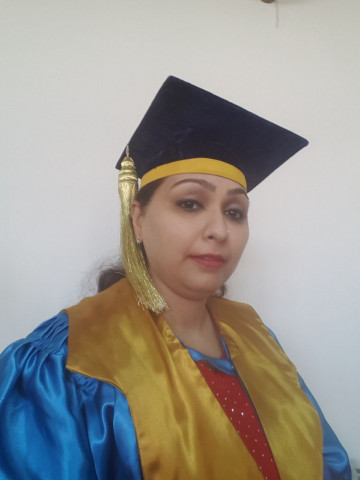
"People [family and friends] used to jeeringly question whether I wanted to learn bomb-making?" recalled Prof Dr Khadija Qureshi, former chairperson of the Chemical Engineering Department of Mehran University of Engineering and Technology, Jamshoro, who is now heading a research project on arsenic, which is a chemical element injurious to human health.
"I had no immediate answer then. But with the passage of time I felt that I could have argued more convincingly if I had known about the scope of this field and other science subjects which are considered only for men."
According to her, contrary to the common perception of finding employment only in the industries of cement, sugar, mining, oil and gas and plastics, the cosmetics, food and drink industries are also big employers of chemical engineering graduates. They can also become entrepreneurs in the cottage industry, she added.
Women's Action Forum urges top judge to apologise for 'sexist’ comment
"Indeed I have conceived a plan of promoting entrepreneurship in the cottage industry of edible and other items but first I have to form a team of volunteers," explained Dr Qureshi, who is also president of the Society of Women Engineers.
Nevertheless, despite the promising career opportunities and a reduction in the scale of past discouragement, female students are still not opting for higher education in science subjects like chemical engineering in considerable numbers. One reason for this is also poor standard of science and math education at school levels.
According to a recent report of Alif Ailaan, the students of classes five and eight scored poorly in Standardised Achievement Tests (SAT). The average score out of 100 for class five in science was calculated at 21.8 and for class eight 26. Similarly, in math the score was 25.3 and 21.1 for classes five and eight respectively.
Education and career
Dr Qureshi spent her childhood in Nigeria where she completed secondary school. After shifting to Pakistan, she was enrolled in Nazareth College in Hyderabad and later in the bachelors of engineering (BE) in chemical engineering at MUET in 1990.
After completing her BE in chemical engineering, she obtained a masters of engineering degree in environmental science from MUET in 1996, followed by her PhD in wastewater treatment in 2008 from MUET. She did her post doctorate from the University of Arizona, US, in 2013 on the research topic 'removal of arsenic from water with polyacrylonitrile (PAN) fibre'.
550 women attempted suicide within a year: report
Dr Qureshi's teaching career at MUET began with her appointment as demonstrator in 1996, lecturer in 1998, assistant professor in 2004, associate professor in 2010 and professor in 2011. In March 2011, she became the first female chairperson of her department. "I was asked do you want to become the chairperson. I replied that if Benazir Bhutto can become prime minister why can't I become the department's head?"
Besides hundreds of BE graduates, some of whom have become her faculty members including four professors, she has supervised four PhD scholars. She is also an editor of the quarterly international journal of chemical and environmental engineering. She has so far contributed 14 research publications in international journals and 12 in national journals on a wide range of subjects like gasoline, bio-mass fuel, ethanol, insulation, water, sewage, sugar cane, coal, arsenic, tea and glass manufacturing.
"I have to do more research and teaching. I still have around 15 years left before I retire."
Research project
Sitting in her laboratory, which is funded by a foreign donor for water research, in the chemical engineering department, Dr Qureshi explained the danger arsenic poses to unsuspecting consumers. "Arsenic lacks colour and odour. And people only notice the aesthetic quality of water. If it’s clean, they drink it," she observed.
According to her studies, subsoil water in almost the entire left bank districts of Sindh is contaminated with dangerous levels of arsenic. Against the World Health Organisation's recommended 10 parts per billion (PPB) permissible limit, up to 200 PPB arsenic was found in a 2017 study submitted by Dr Qureshi's PhD student assistant professor Zulfiqar Ali Bhatti.
Empower women for rapid economic growth
The research took sample from 24 districts of Sindh and found high presence of the contaminant mostly in the left bank districts from Sukkur to Tando Muhammad Khan. "Due to use of groundwater for agriculture, livestock and fishing the vegetables, fruits, poultry, fish and meat has also been contaminated by arsenic. And since we don't have a food analysis system, we don't know which crops and animals we eat have been fed high arsenic subsoil water or river water," she said.
The International Agency for Research on Cancer (IARC) has classified arsenic as a carcinogenic mainly causing skin and bladder cancers. Diabetes, pulmonary, cardiovascular, adverse pregnancy outcomes and child mortality and other illnesses are also associated with arsenic.
Dr Qureshi said that besides mapping, her team is also researching on finding a solution to this problem. Her research on PAN fibre is one of the ways of purifying water from arsenic but since the fibre will have to be imported she is looking for other cheaper solutions. Assistant professor Bhatti in his ongoing PhD is exploring the use of iron ore, whose huge deposits are found in Balochistan and in a few areas of Sindh.
According to Dr Qureshi, iron ore can be equipped in small in-house water filtration units. The team is also researching using it as a filter in water coolers.


















COMMENTS
Comments are moderated and generally will be posted if they are on-topic and not abusive.
For more information, please see our Comments FAQ